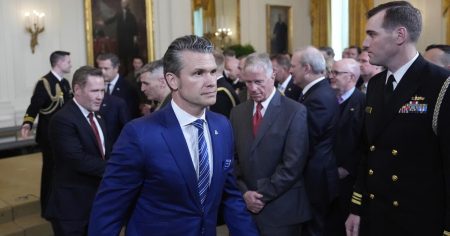The U.K. economy showed signs of resilience at the end of last year, defying expectations and managing to achieve modest growth. This positive news comes as a welcome relief for the government, which has struggled to maintain momentum since taking office. Despite Chancellor Rachel Reeves’ first budget and a challenging global economic landscape, the economy managed to eke out growth, largely driven by an unexpected uptick in industrial output.
According to the Office for National Statistics (ONS), the U.K.’s gross domestic product (GDP) grew by 0.1% in the three months leading up to December, marking a small but significant improvement compared to the 0.1% contraction that many analysts had predicted. This growth was largely fueled by a stronger-than-expected performance in the manufacturing sector, which saw a 0.7% rise in output during December. While this growth may seem modest, it represents a silver lining for a government that has faced significant economic headwinds since taking office.
However, not all the news was positive. Business investment declined by 3.2% during the quarter, reflecting broader uncertainties in the economy. This drop was partly attributed to the increase in National Insurance contributions announced in the budget, as well as the broader economic implications of Donald Trump’s election as U.S. president in November. These factors appear to have dampened business confidence, leading to a pullback in investment.
One of the more concerning aspects of the data was the revelation that the U.K.’s economic expansion over the past year was entirely driven by population growth. When viewed on a per capita basis, GDP actually declined by 0.1% during the quarter and remained flat for the year as a whole. This suggests that while the economy may be growing in absolute terms, it is not keeping pace with the needs of a growing population. This dynamic raises important questions about the sustainability of the U.K.’s economic growth and the living standards of its citizens.
Despite these challenges, the government can take some solace in the fact that the economy has not contracted, as many had feared. The resilience of the manufacturing sector, in particular, offers a glimmer of hope for the future. However, the decline in business investment serves as a reminder of the hurdles that lie ahead. With inflation and interest rates remaining elevated, and global economic uncertainty persisting, the U.K. economy faces a difficult path in the months to come.
In conclusion, while the U.K. economy managed to fare slightly better than expected at the end of last year, the challenges it faces are significant. The government will need to carefully navigate a complex economic landscape, balancing the need to support growth with the pressures of high inflation and rising interest rates. For now, the modest growth in GDP offers a small measure of relief, but the road ahead remains uncertain.









